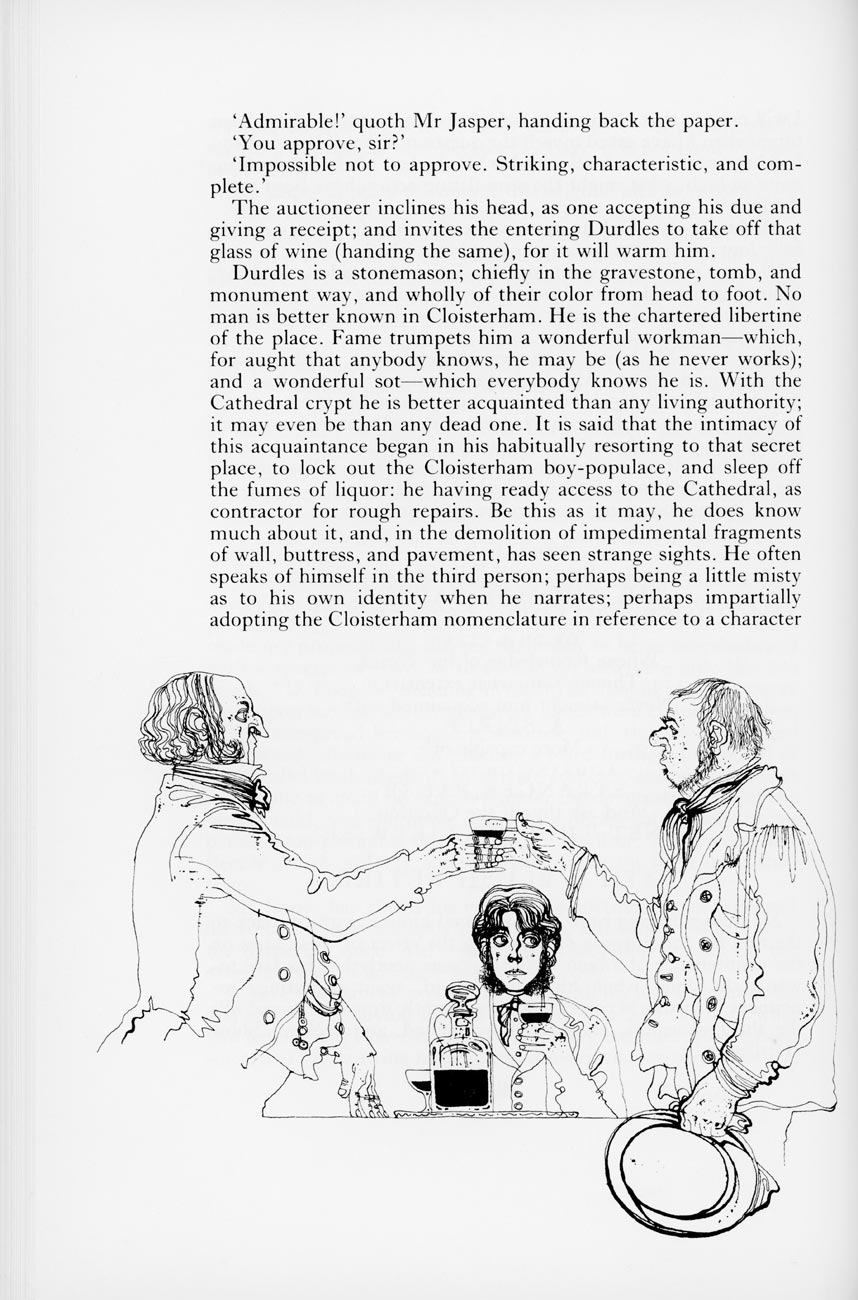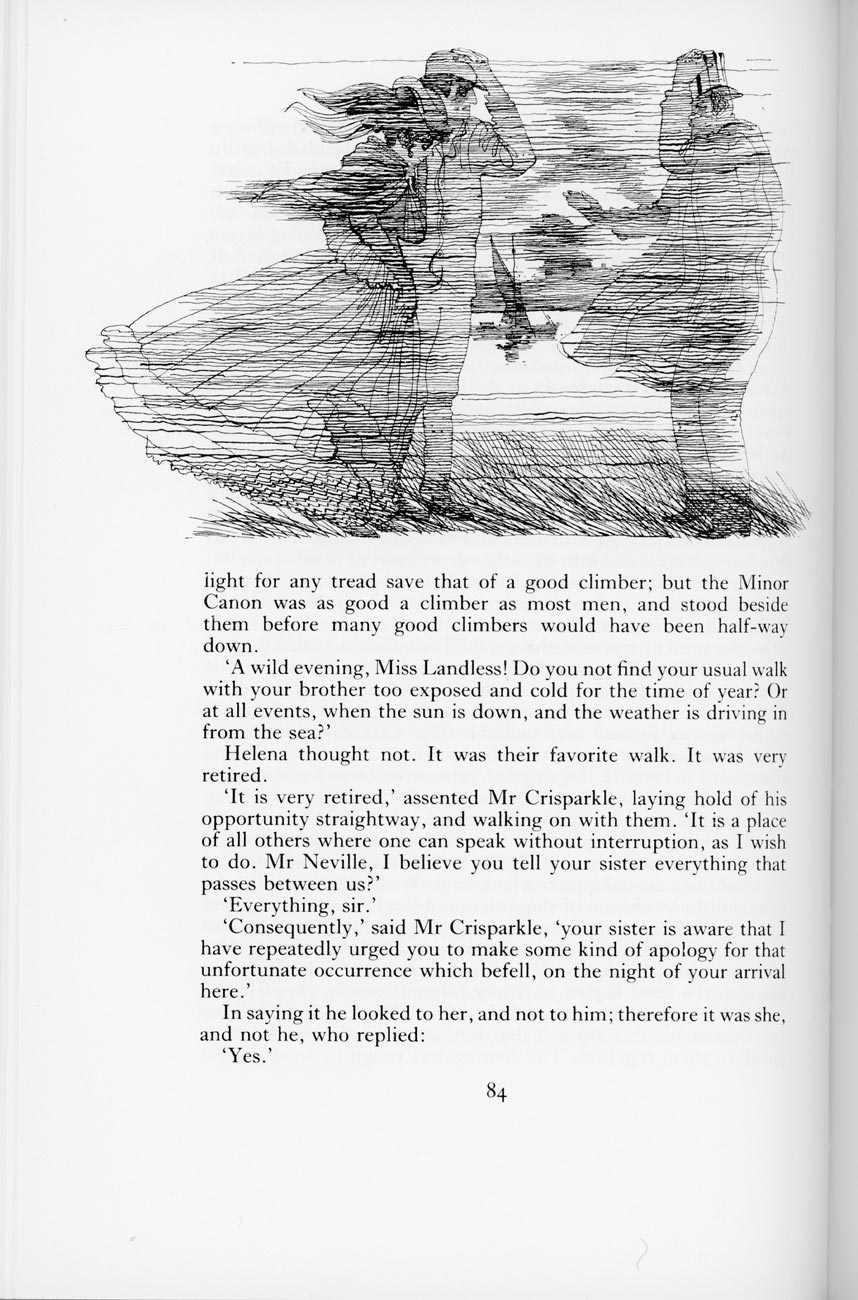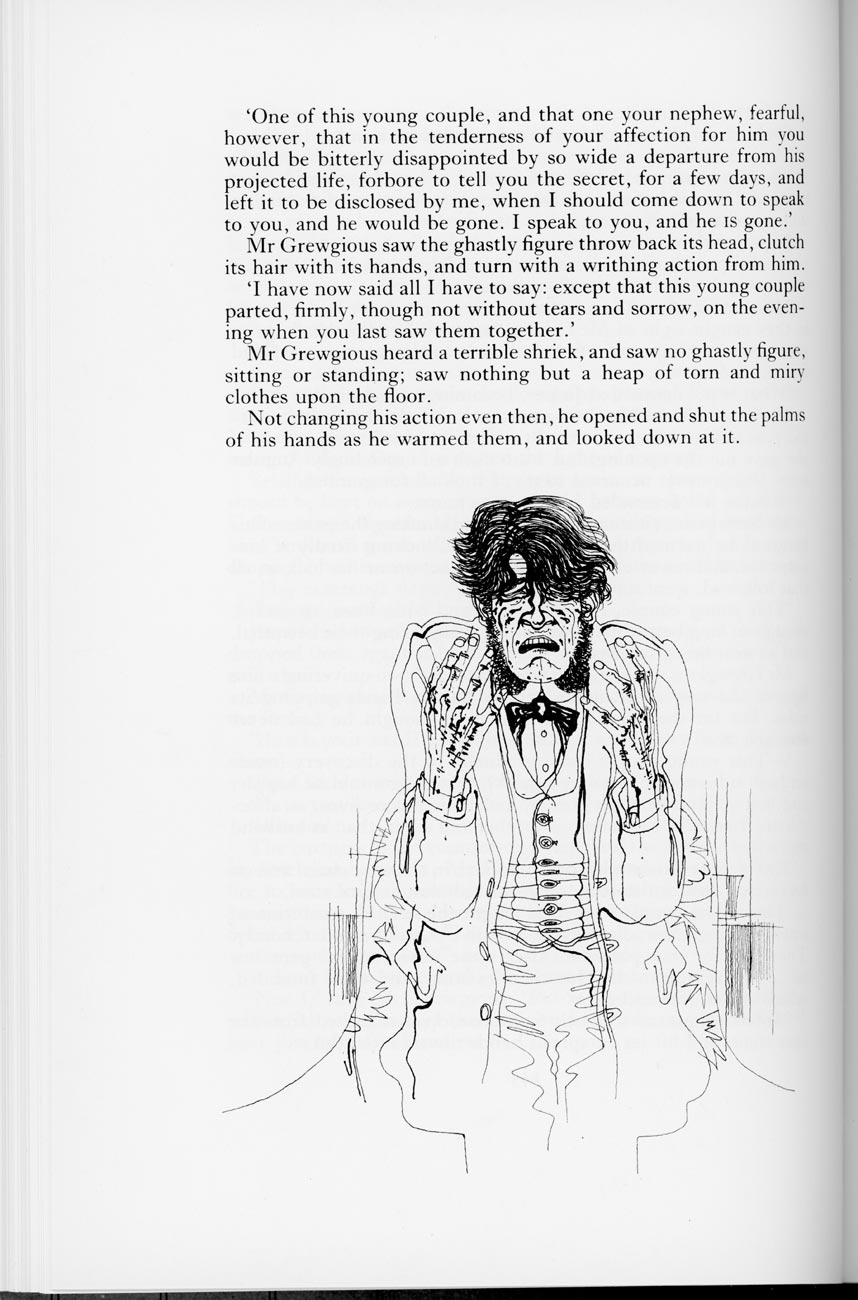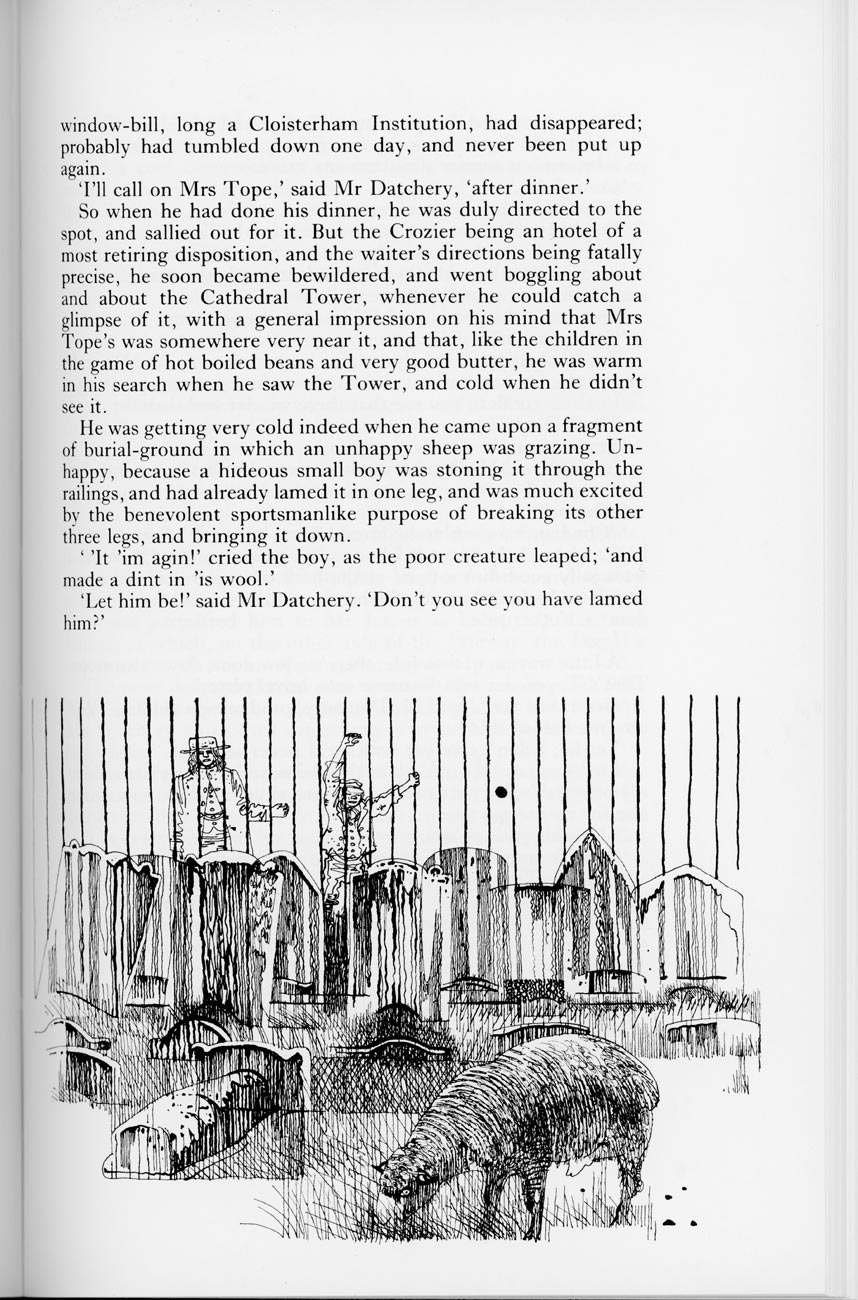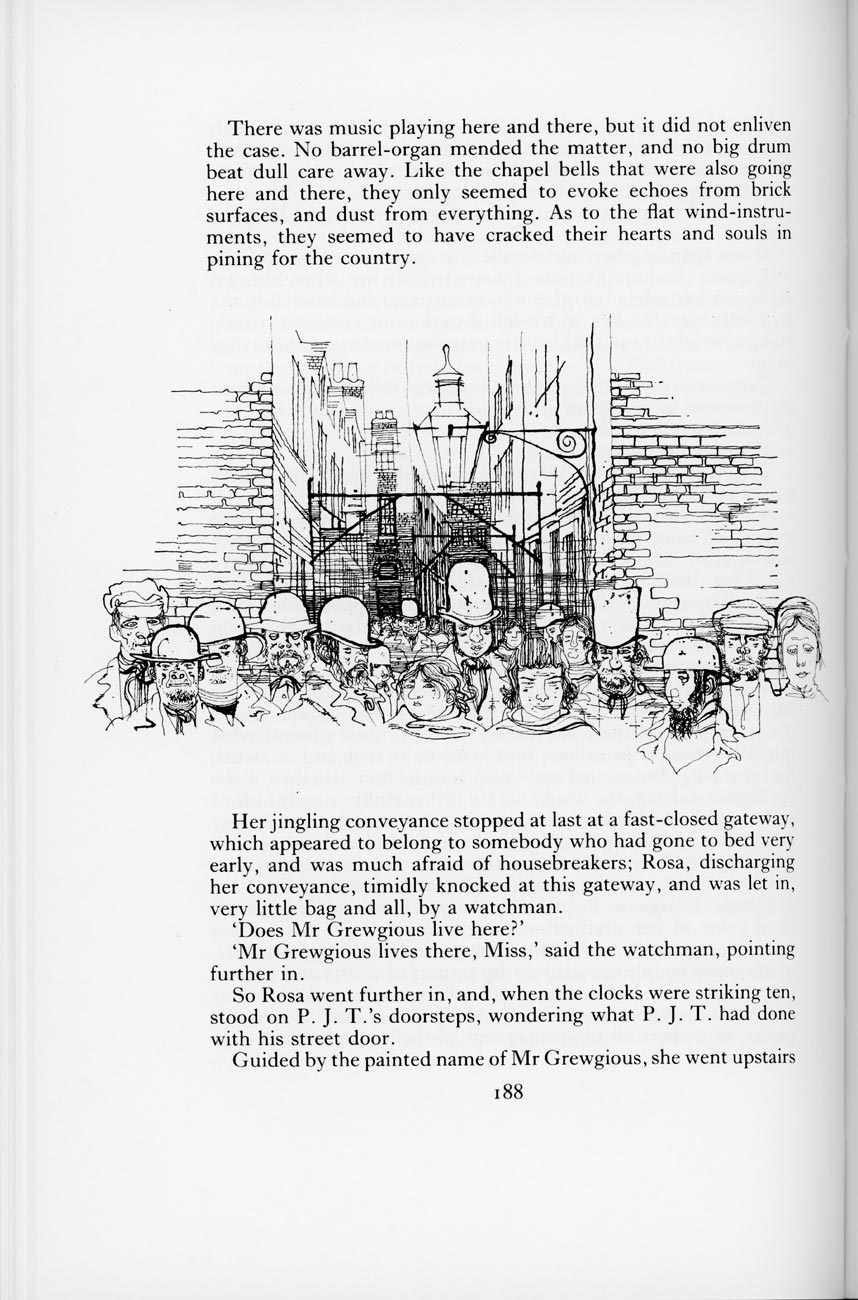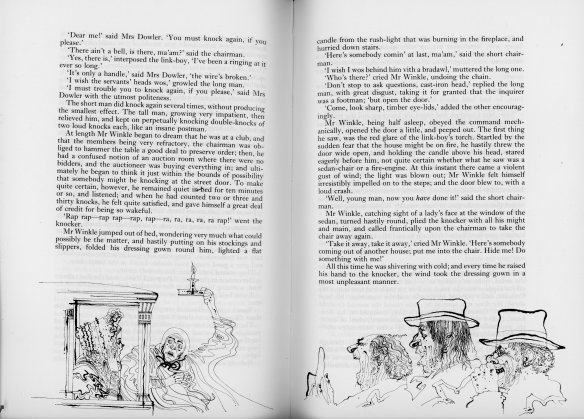‘The Posthumous Papers of The Pickwick Club’ was the 24 year old Charles Dickens’s serialised debut novel. Such publications in 1836 were the soaps of the period before television and a more leisurely age when reading was a main source of entertainment. The monthly instalments of these comic capers were eagerly awaited by those in many walks of life. Those who couldn’t read gathered round their more literate friends and colleagues, having contributed to the costs of library borrowing.
Today’s promotional merchandise boosting sales for blockbuster films and best-selling books like the Harry Potter series are no new idea. Pickwick inspired items were on sale when Queen Victoria came to the throne. There may not have been a market for replica football kits, but there was for Pickwick hats and coats.
The novel itself is really a series of short stories stitched together with the thread of what Mr Pickwick himself terms his “rambles” which were taken by coach and horses with groups of friends around the South of England. Interest was a little slow to catch on and the young author seemed to be feeling his way before picking up the pace with gusto. Gradually we become attached the characters introduced along the way.
Every so often what appears to be an extraneous story is introduced in the patched garment. These I found of varying interest.
As usual with Dickens, we learn much about the social, economic, and legal aspects of contemporary life. The author writes with fluidity; with remarkable knowledge of human nature; and with considerable humour. But, then, the world has appreciated that for almost two centuries,
All the strands are neatly drawn together in the closing stages when we learn the outcome of various relationships and their prospective futures.
Christopher Hibbert’s introduction to my Folio Society edition is scholarly and informative – I owe Pickwick hats and coats to him.
I have now finished reading the lengthy tome and can complete my posting of Charles Keeping’s








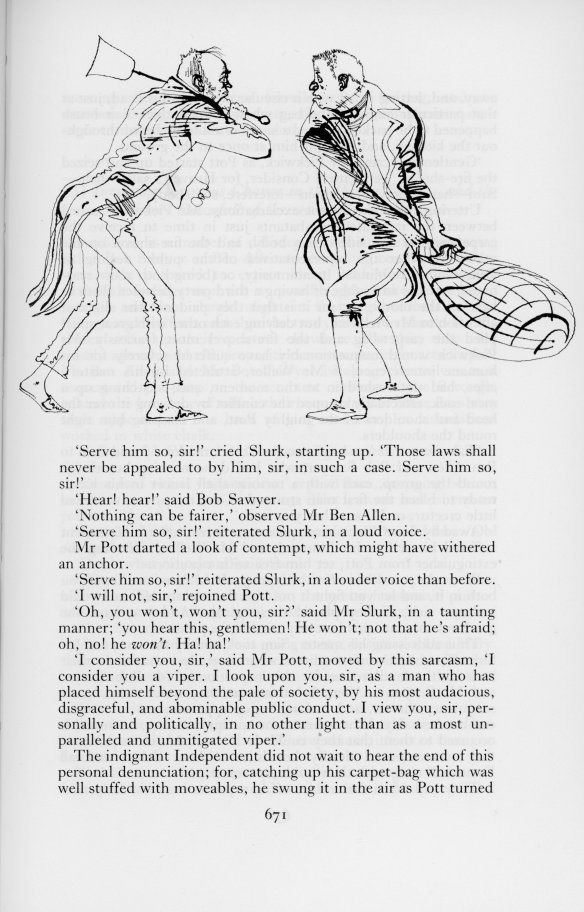





lively line drawings leaping exuberantly from the leaves of the book. I have written before about the artist’s fidelity to the text. What is also striking is his expressive rendering of the author’s characterisation. Keeping conveys the nature of his subjects with humour and accuracy. Some are grotesque caricatures; others gentle and sensitive souls. Comparison with the first and last of today’s selection will indicate that Charles Keeping can produce consistent individual portraits.
This evening we dined on smoked haddock, cod fish cakes, very tasty carrots, tender runner beans, juicy ratatouille and Jackie’s piquant cauliflower cheese, with which she drank Hoegaarden and I finished the Syrah.











































































